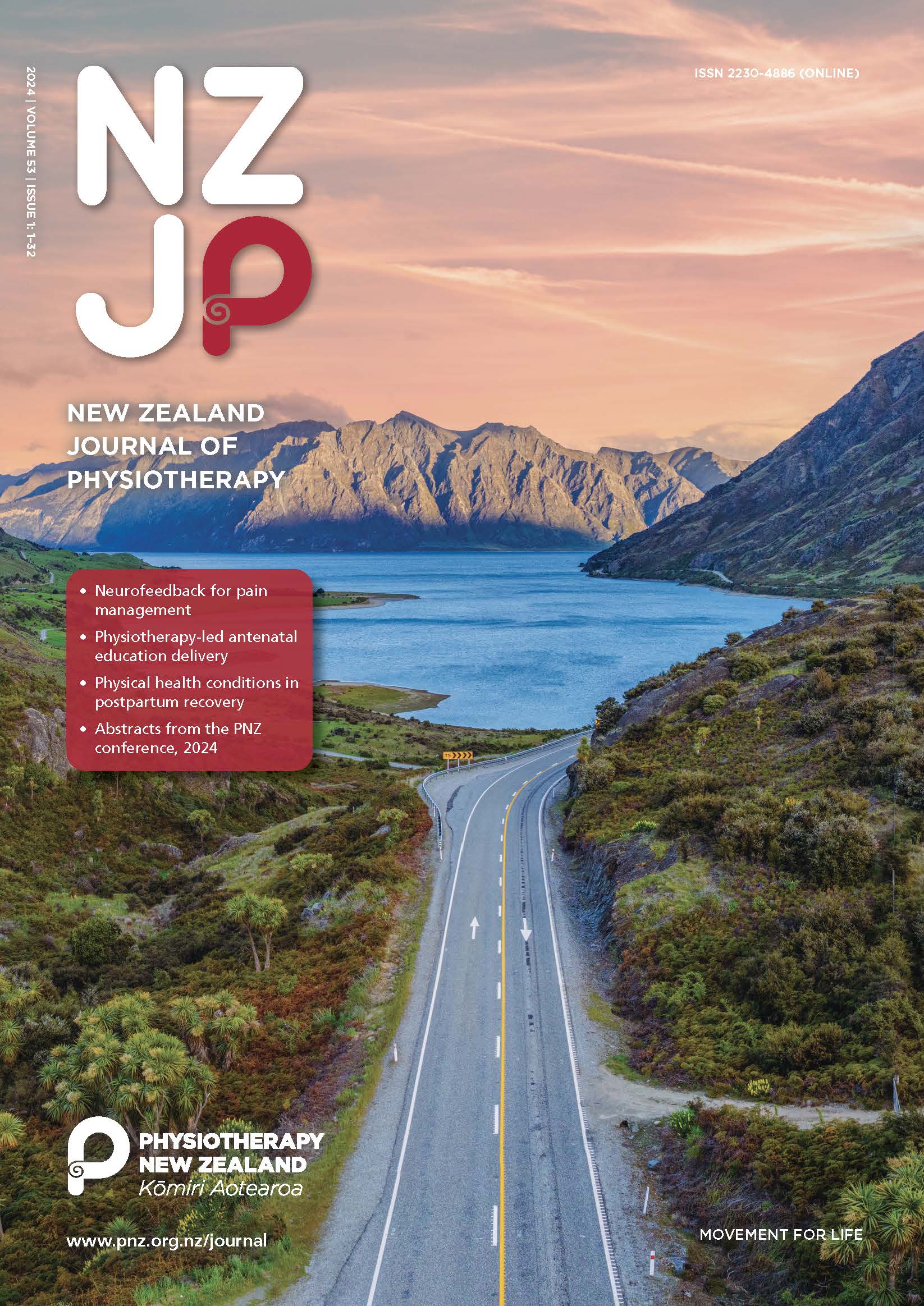“I'm sorry, I can't. I feel the tears coming on already”: The views of mothers, midwives and physiotherapists on postpartum recovery in New Zealand
ML Roberts Prize Winner
DOI:
https://doi.org/10.15619/nzjp.v53i1.413Keywords:
Childbirth, Physiotherapy, Postpartum, Recovery, RehabilitationAbstract
Worldwide, mothers experience physical postpartum symptoms affecting their quality of life, such as perineal pain, urinary incontinence, faecal incontinence, pelvic girdle pain, and dyspareunia. However, the experience of postpartum recovery in New Zealand is poorly understood. The primary objective of this study was to explore the views of postpartum mothers, midwives, and pelvic and women’s health physiotherapists regarding physical postpartum symptoms. The secondary objective was to investigate perceptions of the response of New Zealand’s funded maternity services, including access to pelvic and women’s health physiotherapy. Fifteen participants completed a semi-structured interview: five mothers in the first postpartum year, five midwives, and five pelvic and women’s health physiotherapists. Through thematic analysis, five key themes were identified: (a) beliefs about the postpartum period; (b) the “knock-on” effect; (c), the current maternity model; (d) belief that pelvic and women’s health physiotherapy can help; and (e) barriers and facilitators to pelvic and women’s health physiotherapy. Physical postpartum symptoms were seen to limit daily activities and have psychological ramifications for mothers. Participants felt that there is limited support for mothers’ physical symptoms under New Zealand’s funded maternity services. Pelvic and women’s health physiotherapy was perceived as a beneficial service for postpartum rehabilitation; however, several perceived barriers to this service were noted, including cost, a lack of knowledge, and difficulty navigating the healthcare system. Greater contributions are desired for mothers’ physical symptoms under the current maternity model of care, including more funding, education initiatives, and improved referral methods.


